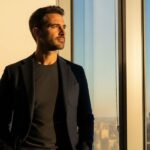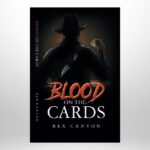Today, we’re speaking with Greg Chen, a multi-award-winning product designer who currently works at a social media company. Chen is an expert in the field of augmented reality (AR) and has won international awards for his innovative projects, including Beyond AR museum experience and AR effect creation tool for social media.
Q: What drew you to the field of AR, and how did you get started in it?
I found AR fascinating as it lets you overlay virtual information on top of the real world. As a product designer, I’ve worked on both digital and physical products for quite a few years. I started out with digital products like mobile apps and websites, and then shifted into hardware product design at HP. I’ve had some successes in both areas – for example, my Envy Wood project won iF Gold and CES Innovation awards. When I saw the potential for AR, I thought, “Why not combine my two skill sets and explore this new area?”
Q: What are the main differences between designing regular products and designing AR products?
There isn’t that much of a difference in terms of design principles. It’s still all about putting the user first and figuring out what interactions and flows make sense for them in a given context.
Q: Can you tell us about your work on the project Beyond?
Beyond is an AR project that improves the museum experience for younger generations. We made it fun, interactive, and shareable on social media, and it’s been a huge success, winning multiple international awards, such as MUSE Design Award, NY Product Design Award, and Indigo Design Award.
Q: Can you tell us about the AR effect creation tool you’re working on?
The tool lets everyone make their own AR effects, which can then be used by people in their social media posts. It’s been a tremendous success, with 280 million videos daily that use effects created with our product, and 115 billion views on those effect videos. It’s wild!
Q: What sets you apart from other product designers in your field?
Empathy. For example, when I was designing the AR effect creation tool, I really took the time to understand what the creators’ pain points were and designed a reroute node to help them organize their creation process more easily. It turned out to be so impactful that I even got a patent for it.
Q: What’s the most rewarding thing about being a product designer?
Creating designs that positively impact people’s lives. For example, knowing that my email newsletter design reached an audience of 4 million with just one click and helped people make better decisions is incredibly fulfilling!
Q: Do you have any advice for designers working in your field?
Focus on the users and their needs. Design is about creating solutions that solve problems and improve people’s lives. Also, Be creative and original so you can proudly say this is your design!
















